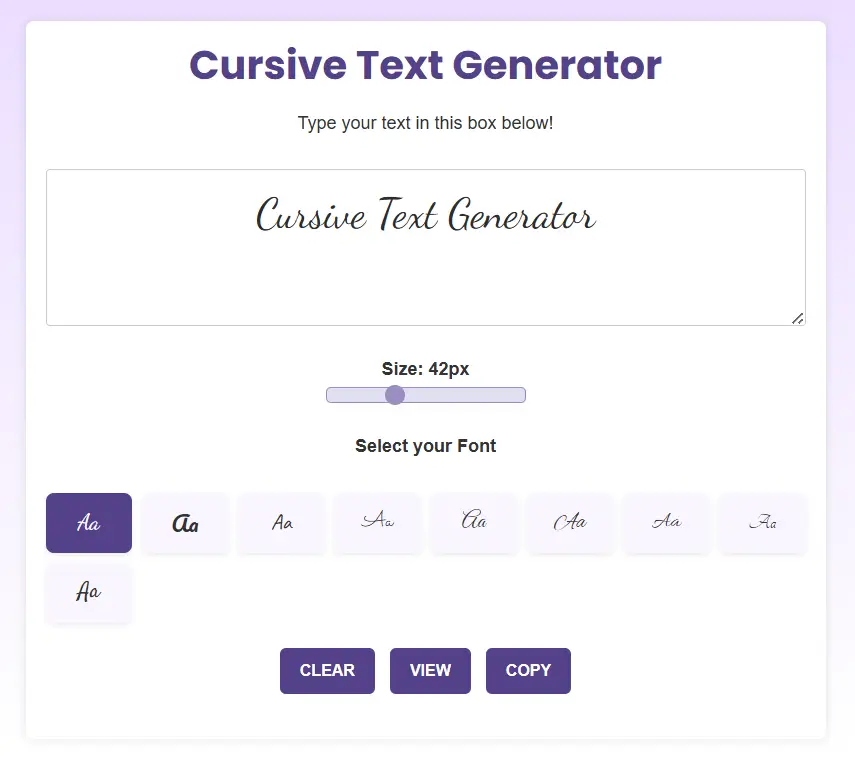Mastering Cursive Alphabets: A Guide to Elegant Writing
Cursive alphabets are letters written in a connected, flowing style where each letter links to the next. This style helps writing move smoothly across the page, often without lifting the pen.
Alphabet in cursive offers clear, easy-to-follow worksheets and a practical guide to help learners practice and improve their cursive handwriting, covering every letter from A to Z.

Cursive Writing and its Importance
Cursive writing has a rich history that dates back to the 16th century. Initially, it was developed to make writing faster. The term “cursive” comes from the Latin word currere, meaning “to run” or “to flow.”
Learning cursive writing builds more than just neat penmanship. It helps with muscle memory, improves hand-eye coordination, and supports better spelling and reading for kids. For adults, it brings a personal touch to notes, cards, or art projects. It also trains the brain to focus on form and flow, making it a helpful skill beyond just writing.
Understanding the Basics of Cursive Writing
Key Features of Cursive Alphabets
One key feature of cursive is its emphasis on fluidity and smoothness, making it look more natural compared to the segmented nature of print writing. Each letter in cursive often has loops, swirls, or tails, giving it a more artistic and personal flair.
Additionally, cursive alphabets often use slants or curves that help the writer maintain a consistent flow while writing quickly and neatly.
How Cursive Writing Enhances Letter Formation
Cursive writing improves how letters are formed by teaching rhythm and motion. Because each letter connects, the hand moves in a consistent pattern, reducing stops and starts. This builds better control over spacing and letter size.
Practicing cursive also strengthens hand muscles, which is helpful for younger learners. Over time, this leads to neater, more consistent handwriting.
Want to practice cursive writing digitally? Try our Cursive Text Generator Tool to transform your regular text into beautiful cursive lettering instantly!

Alphabets in Cursive A to Z
Mastering cursive letters starts with understanding each one on its own. Use the links below to see how each cursive letter is formed, complete with practice tips and visuals to guide you step by step.
Differences Between Cursive alphabets and Print Letters
| Feature | Cursive Alphabets | Print Letters |
|---|---|---|
| Letter Connection | Most letters are connected in a flowing stroke | Letters are written separately |
| Writing Speed | Typically faster due to continuous strokes | Slower as each letter requires lifting the pen |
| Stroke Style | Uses loops, curves, and fluid lines | Straight lines and clear breaks |
| Appearance | Elegant, flowing look | Block-style and simple in structure |
| Learning Focus | Emphasizes rhythm and motor control | Focuses on individual letter shapes |
| Usage Context | Often used for personal notes, signatures, and art | Common in textbooks, signage, and digital content |
| Legibility for Beginners | May be harder to read for those unfamiliar | Easier to read |
How to Learn Cursive Alphabets
Learning cursive alphabets can be a rewarding skill that improves handwriting and adds a personal touch to your writing.
1. Understand Individual Letters
Start by learning lowercase cursive letters on lined paper, focusing on their shapes and flow. Group letters with similar strokes for efficient practice.
2. Move to Uppercase Letters
Once comfortable with lowercase, practice uppercase cursive letters, noting their unique forms and practicing them regularly.
3. Connect Letters to Form Words
Begin writing simple words by smoothly connecting letters, progressing from short to longer words to improve fluidity.
4. Maintain Proper Grip and Posture
Hold your pen or pencil comfortably and sit upright at a suitable writing surface to support neat handwriting.
5. Practice Consistently
Set aside daily time for cursive practice using worksheets, tracing books, or printable sheets to build muscle memory.
6. Use Resources and Review Your Work
Utilize online tutorials and worksheets for guidance, and compare your writing to examples to make adjustments for consistency.
Tools and Materials Needed for Practice
To get started with cursive writing, here are the essential tools and materials you’ll need:
- Pen or Pencil: Use a comfortable, fine-tip pen or pencil.
- Quality Paper: Choose smooth paper for easy writing.
- Practice Worksheets: Printable cursive sheets for tracing.
- Pencil with Eraser: To correct mistakes during practice.
- Ruler: Helps with straight lines and letter alignment.
- Notebook: Keep a dedicated space for practice.
These tools will make your cursive writing practice more efficient and enjoyable.
also read: How to Write Each Cursive Alphabet Letter: A to Z Breakdown
How to Make Cursive Writing Fun for Kids
One of the best ways to practice cursive letters is to incorporate it into your daily routine. Start by writing grocery lists, to-do lists, or even notes to friends and family in cursive.
This not only helps improve your cursive skills but also makes the practice feel natural and part of your everyday tasks. You can even write down your thoughts in a journal using cursive to make it more enjoyable and consistent.
Try writing quotes or your favorite poems in cursive with decorative flourishes to add a personal touch. You can also experiment with colorful pens, making your cursive writing visually appealing.
Another fun activity is creating greeting cards or posters using cursive, which adds a unique, personal element to gifts or decorations.
Conclusion:
Cursive alphabets are not just an aesthetic choice—they play an important role in improving handwriting skills and boosting cognitive development. Mastering cursive letters enhances fine motor skills, increases writing speed, and promotes a more fluid and consistent writing style.
By understanding the unique features of each letter and practicing regularly, you can improve your cursive writing and make it a valuable part of your daily routine.
